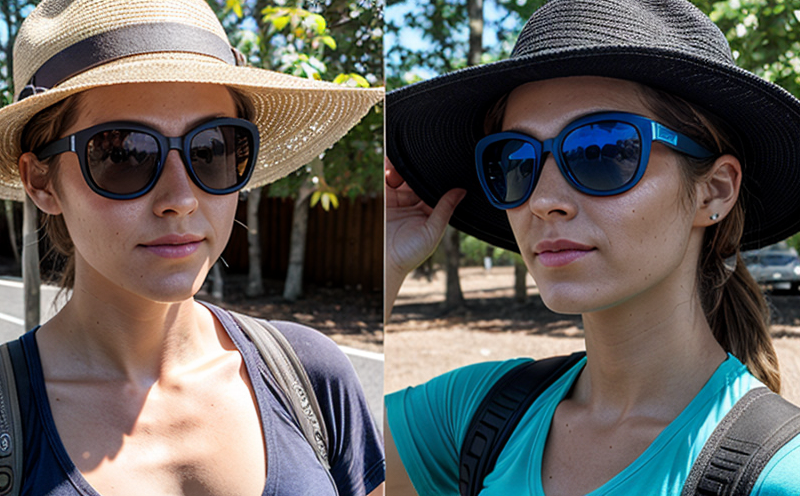ASTM G155 Standard practice for UV exposure of nonmetallic materials Xenon arc method
The ASTM G155 standard is a crucial benchmark in the textile industry, particularly for materials that require protection against ultraviolet (UV) radiation. This standard provides detailed procedures for exposing nonmetallic materials to simulated sunlight using a xenon-arc lamp. The purpose of this testing is to evaluate the resistance of textiles and other similar materials to UV-induced degradation over time.
The ASTM G155 method is widely recognized as one of the most comprehensive approaches available for simulating real-world exposure conditions, making it an indispensable tool in quality assurance processes. By employing a xenon-arc lamp, the test accurately replicates the effects of both solar ultraviolet (UV) light and visible light on nonmetallic materials.
The testing procedure involves exposing samples to controlled levels of UV radiation under specific conditions that mimic outdoor exposure scenarios. This includes simulating different geographic locations with varying intensities of sunlight, as well as adjusting for environmental factors such as humidity and temperature. The goal is to replicate the exact conditions in which textiles will be used, ensuring accurate predictions about their long-term performance.
One key aspect of this testing method is the use of a xenon-arc lamp, which emits radiation across a broad spectrum that closely resembles sunlight. This allows for more precise and consistent results compared to other exposure techniques. The standard also specifies detailed criteria for sample preparation, including cutting specimens into standardized sizes and shapes.
Another important feature of ASTM G155 is its focus on evaluating the durability and integrity of textiles over extended periods. By simulating years of real-world use in just a few weeks or months, manufacturers can quickly identify any potential weaknesses or areas where further improvements may be necessary. This accelerated aging process enables companies to make informed decisions about material selection and product design.
To ensure accurate results, laboratories adhering to ASTM G155 must follow strict procedures when setting up their equipment and conducting tests. These guidelines cover everything from lamp maintenance to data collection methods, ensuring consistency across different facilities. The standard also includes provisions for handling special cases where specific conditions may apply.
The significance of ASTM G155 lies in its ability to provide reliable data that can be used throughout the entire supply chain—from raw material suppliers to final product manufacturers. By providing consistent and repeatable results, this standard helps ensure that all parties involved have confidence in the quality of their products. Moreover, compliance with ASTM G155 is often required by regulations governing textile production or export.
Understanding how UV radiation affects textiles is essential for developing effective protection strategies. With increasing concerns about environmental sustainability and consumer health, manufacturers must prioritize selecting materials that can withstand harsh conditions without compromising performance. Through rigorous testing like ASTM G155, these challenges can be addressed effectively while maintaining high standards of quality.
Applied Standards
The ASTM G155 standard is widely recognized and utilized across various industries due to its reliability and accuracy. It has been adopted by numerous organizations around the world as a benchmark for evaluating nonmetallic materials exposed to UV radiation.
- ASTM G155-23 Standard Practice: This document provides detailed procedures for exposing nonmetallic materials to simulated sunlight using a xenon-arc lamp. It specifies the types of materials that can be tested, the conditions under which testing should occur, and how results should be reported.
- ASTM G154 Standard Practice: This companion document provides additional guidance on selecting appropriate specimens for UV exposure tests according to ASTM G155 standards. It covers topics such as sample preparation, conditioning, and handling during testing.
Customer Impact and Satisfaction
The impact of ASTM G155 extends far beyond just meeting regulatory requirements; it plays a vital role in enhancing customer satisfaction by ensuring quality products. When manufacturers comply with this standard, they demonstrate their commitment to delivering reliable and durable goods.
- Increased confidence: Knowing that your product has been rigorously tested according to ASTM G155 instills trust among consumers who value longevity and reliability.
- Better reputation: Companies known for adhering strictly to industry standards tend to enjoy stronger brand loyalty from their customers.
Competitive Advantage and Market Impact
In today's competitive market, staying ahead requires more than just producing good products. Demonstrating adherence to recognized international standards like ASTM G155 can give your business a significant edge over competitors.
- Higher quality perception: Consumers associate compliance with high-quality manufacturing processes and superior product performance.
- Promotes innovation: By continuously improving upon established standards, companies encourage ongoing advancements within their industry sectors.





